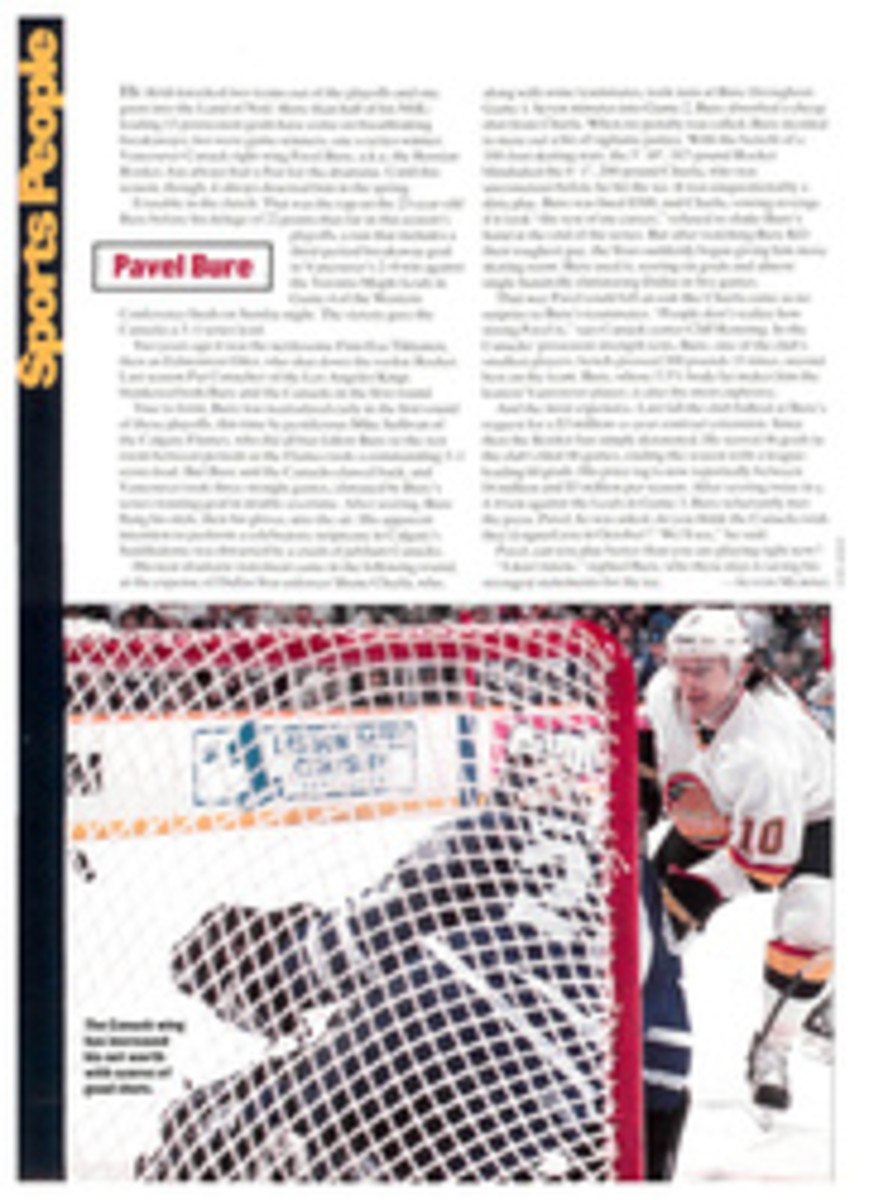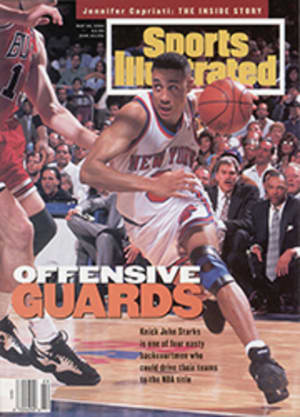
TO OUR READERS
The Preakness was the finish of SI photographer Bill Frakes's work week. He had spent some time shooting Miami Dolphin quarterback Dan Marino and some more time with Houston Oiler defensive lineman Ray Childress and some more time on the breaking story of teenage tennis player Jennifer Capriati's sudden troubles and some more time chasing University of Miami football players after allegations of payoffs emerged...but by the end of the week he was in Baltimore, climbing ladders, digging holes in the dirt at the side of the Pimlico racetrack, hiding cameras like so many 35-millimeter Easter eggs around the finish line in order to capture the perfect shot of the winner of the second leg of horse racing's Triple Crown. "The finish line is a big responsibility," says Frakes. "You have about a half a second to capture the action as it comes past. Everyone has this image of the photographer nervously standing by the rail, hoping to click at the proper moment. Well, it's not like that. For the Preakness, just for the finish, I'll have 20 remotes set up at different positions. For this year's Kentucky Derby, I had 31."
At race time the cameras were prefocused to a spot where the horses would pass. Frakes had four assistants pushing buttons at precise moments, making each camera whir through a roll of film in six seconds. Somewhere in the pile of recorded images would be the one picture that would tell the story best. Maybe it would be taken from one of the buried cameras. Maybe it would be taken from one of the cameras mounted on a pole. Maybe—and this was what Frakes was hoping—it would be taken from an angle that would be completely different. "That is always the challenge at the big event, to get something different," says Frakes, who was joined by two other SI photographers searching for unique angles at Pimlico. "When you succeed, when you find that something different, you know it worked, because next year you go to set up a camera at the same place and 15 photographers are already there. So you have to start looking again for something different."
The 38-year-old Frakes developed his eye for the different while growing up on the plains of Scottsbluff, Neb., where the landscape was so uniform that he subconsciously had to search for subtleties in color and shape, had to look hard to see activity on any horizon. He went to college in the technicolor environment of Arizona Slave, "where Vie found he could see things that others often missed. "I was writing for the school paper and didn't like the photographs that were running with my stories," he says. "The editor said, 'Hey, you try it if you think you can do better.' I did and got lucky and took some nice pictures. One thing led to another."
Frakes now lives in Coral Gables, Fla., where he was based while working for The Miami Herald for 12 years, covering riots and natural disasters, murders and conflicts around the world. He was national newspaper photographer of the year in 1983 and won the Best Sports Action Picture of the Year award in 1993 for a 1992 Olympic photo of Carl Lewis. A year ago January, after freelancing for SI for seven years, he became one of our full-time contract photographers. Director of photography Heinz Kleutmeier calls him "one of the hardest-working guys I know, the guy you go to in the clutch for thoughtful features to action news."
Samples of Frakes's feature work appear in this week's piece on caddies, which begins on page 82. As for how he did at the Preakness this weekend, see page 38.
PHOTO
JASON BURFIELD
Frakes keeps more than one eye on the action.

